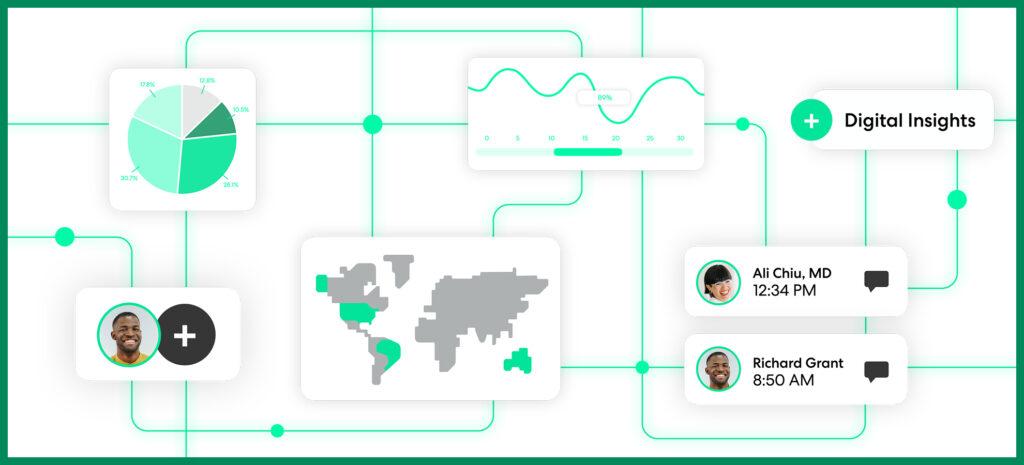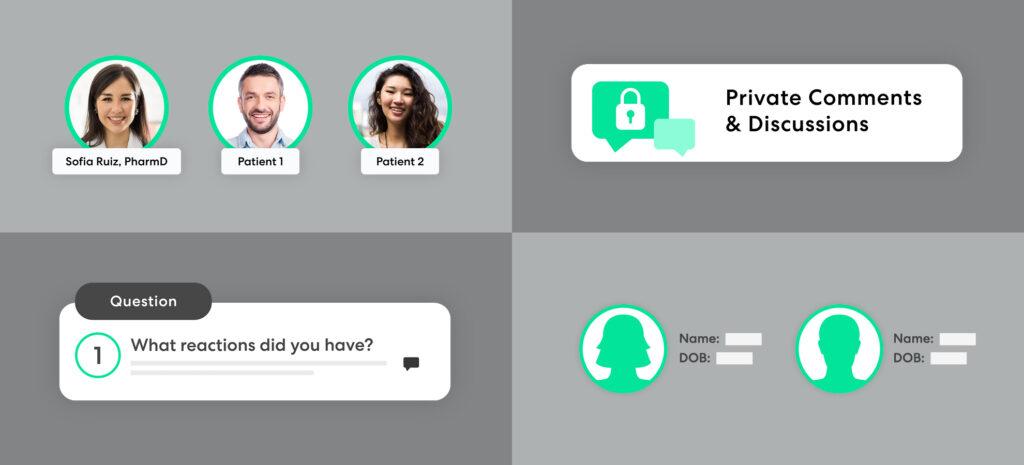You can listen to this post instead.
Insights management is the process of collecting, analyzing, sharing, and disseminating information to make a decision or change a behavior. Data and observations on their own are not insights, but they can be mined for insights. Misalignment on this definition alone can throw an insights management strategy off course from the very beginning. Therefore, teams must define insights to understand whether or not they’re getting what they need to make confident decisions.
While the concept of insights management may sound new to you, you’re likely already doing it. From pre-clinical activities through medical affairs to product launches and beyond, pharmaceutical and medical device organizations rely on expert insight to guide important strategic decisions.
Get more eureka moments from the data you collect.
But insights management isn’t just the activity around planning and executing advisory board meetings, steering committees, publication development, and other insight-gathering activities. It begins before that – by getting a truly holistic view of disease communities and selecting the right experts – and continues beyond into understanding a complete picture of scientific and market signals that allow for better decision-making.
To truly define insight, think of these takeaways as the “eureka moments” that solve a problem.
Life science companies are facing new challenges, and many industry leaders are braving change management and prioritizing tech and digital transformation as strategic imperatives for their changing business landscape. Here’s how insights management fits in.
Understanding disease communities
Pharmaceutical and medical device teams already understand how regional and global experts can inform strategy and impact decisions. This understanding lies at the heart of why MSLs, for example, work to build and strengthen relationships with prominent KOLs. It’s also why clinical teams might engage patients to get feedback on a proposed study protocol and the reason commercial teams conduct market research.
But relying on these experts isn’t enough – teams also need a holistic understanding of the disease communities they are studying. With this 360-degree view, teams will better understand what they should focus on and the key questions they should ask.
For clinical teams, this might mean identifying the best possibilities for study sites or where appropriate patient populations might be located. Medical affairs organizations may be able to identify rising stars with large networks via influence mapping. And many groups will turn to social listening to better understand conversations around brands or within patient advocacy networks.
Effective engagement, with plenty of flexibility
We all learned about virtual engagement and tech-enabled collaboration during the pandemic. Online interactions offer plenty of benefits, but there are also drawbacks for teams not using the right tools. Standalone video calls augmented by email chains and file sharing can’t replace peer-to-peer exchange.
Human nature and busy schedules mean that many people implicitly opt-out of video calls by multitasking or letting more outspoken participants dominate the conversation. This means that pharmaceutical and medical device teams are missing out on important contributions.
While live events and in-person meetings have resumed in most parts of the world, pharmaceutical and medical device teams have learned when to deploy different types of virtual engagement. Hybrid virtual engagements – combining webcasts or in-person meetings with asynchronous collaboration – better use time spent in person and reduce the need for constant travel to participate in a peer-to-peer exchange. Life science organizations are increasingly designing these interactions to produce a high volume of dialogue and high-quality discussion.
From insights to action
Does identifying insight define success? In the aftermath of a successful engagement, it’s tempting to think the bulk of the work is done. But for many life science teams, this marks the start of another labor-intensive process. Insights from experts, patients, and influencers must be transcribed or collated, shared with other stakeholders, and examined to reveal key insights.
At this point, the process bogs down – because, in many cases, there is no process. What follows can be trial and error that reveals a lack of insight.
For example, MSL teams gather insights in various settings, from one-to-one discussions with HCPs to large in-person events like medical congresses. This information is collected in many formats, from typed or handwritten notes to technology designed to capture observations.
Time-consuming manual transcription, scattered email chains, information stored in disparate systems across geographies and lines of business – all of these factors make it difficult to get a complete picture, let alone make strategic decisions.
A single problem, a single solution
From these varied needs, a single technology has emerged: insights management solutions that treat insight-gathering as a single process rather than a collection of different processes.
Insights management capabilities are critical when it comes to business value. And while most companies aspire to be data-driven, fewer than a third can connect analytics to action. This is because no technological or cultural system is in place to bridge the gap from data to execution.
The first step in realizing the actual value of an insights management platform is viewing all of these issues – expert selection, effective engagement, and instantly understanding sentiment – as a single challenge best solved by a single solution. Organizations can more easily go from insight to action when they understand this and adapt accordingly.
Want to understand more about the trends driving the need for insights management in the life science industry? Read the next post in this three-part series.







